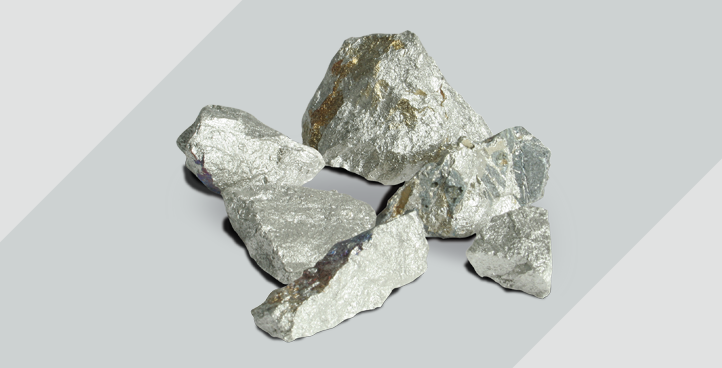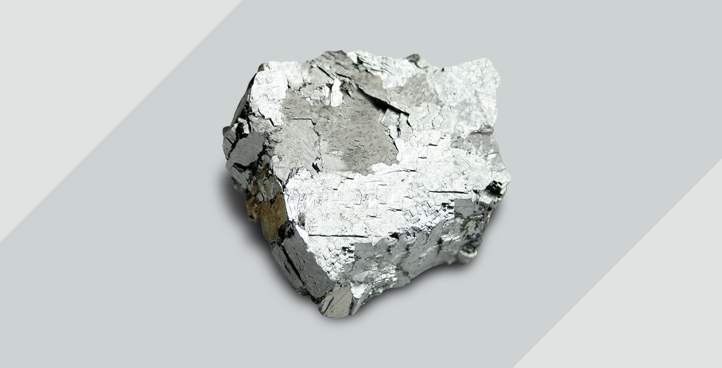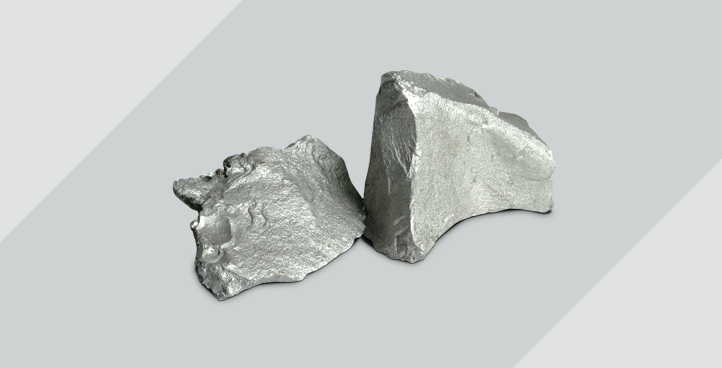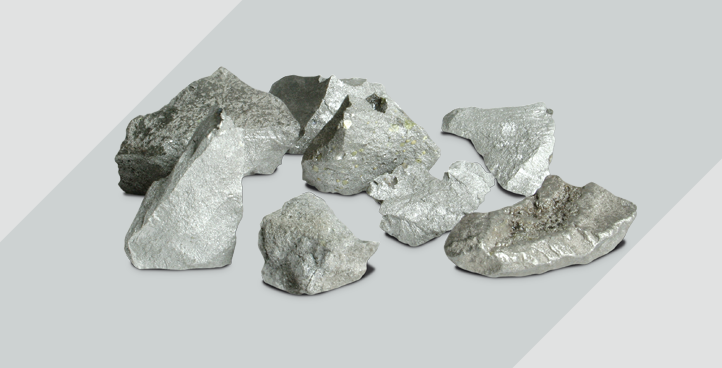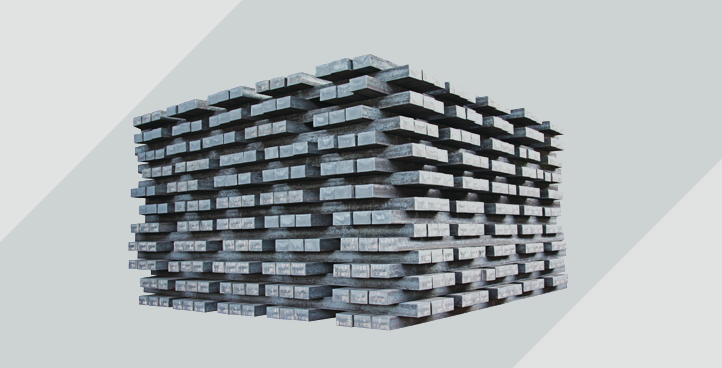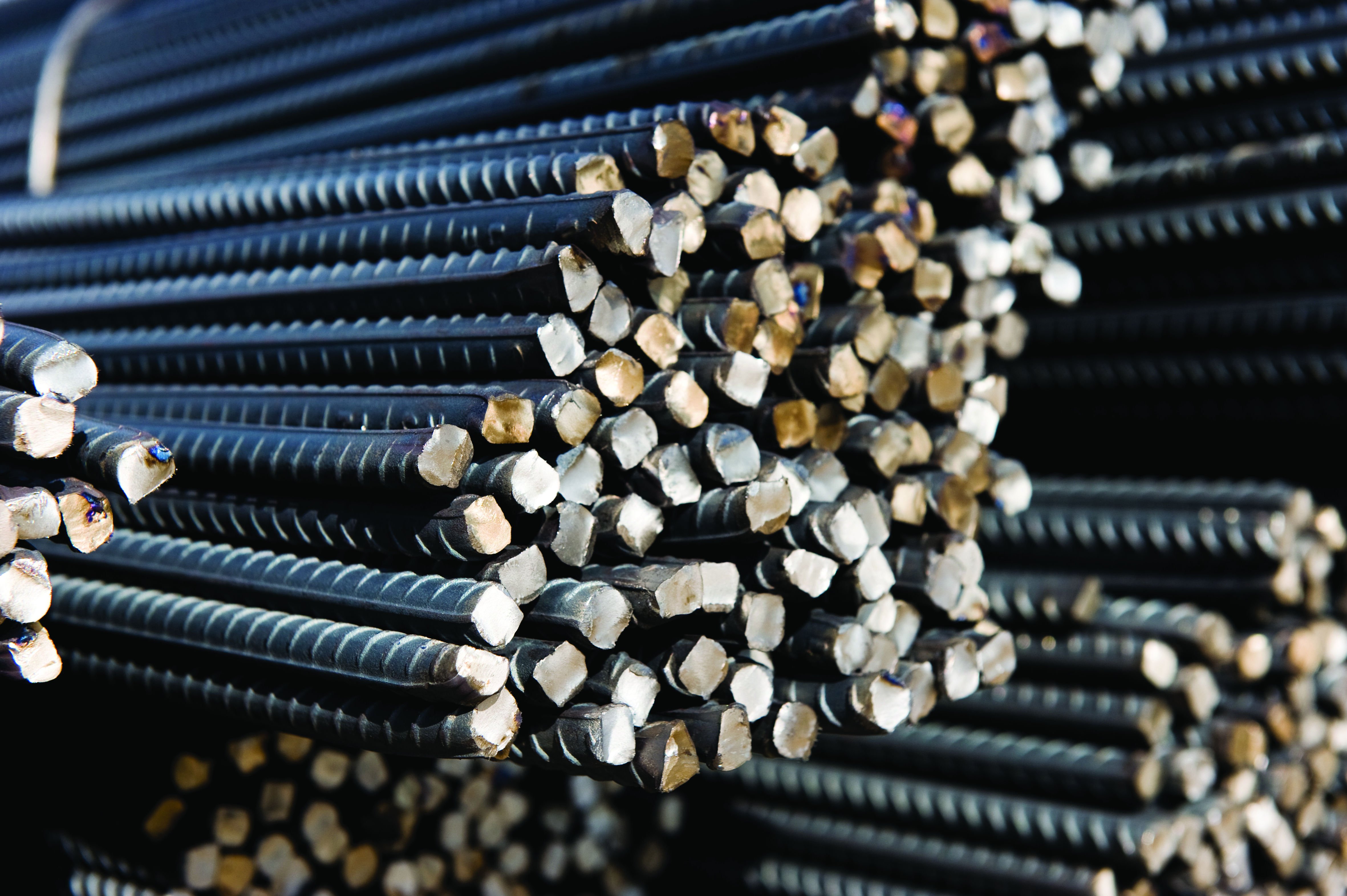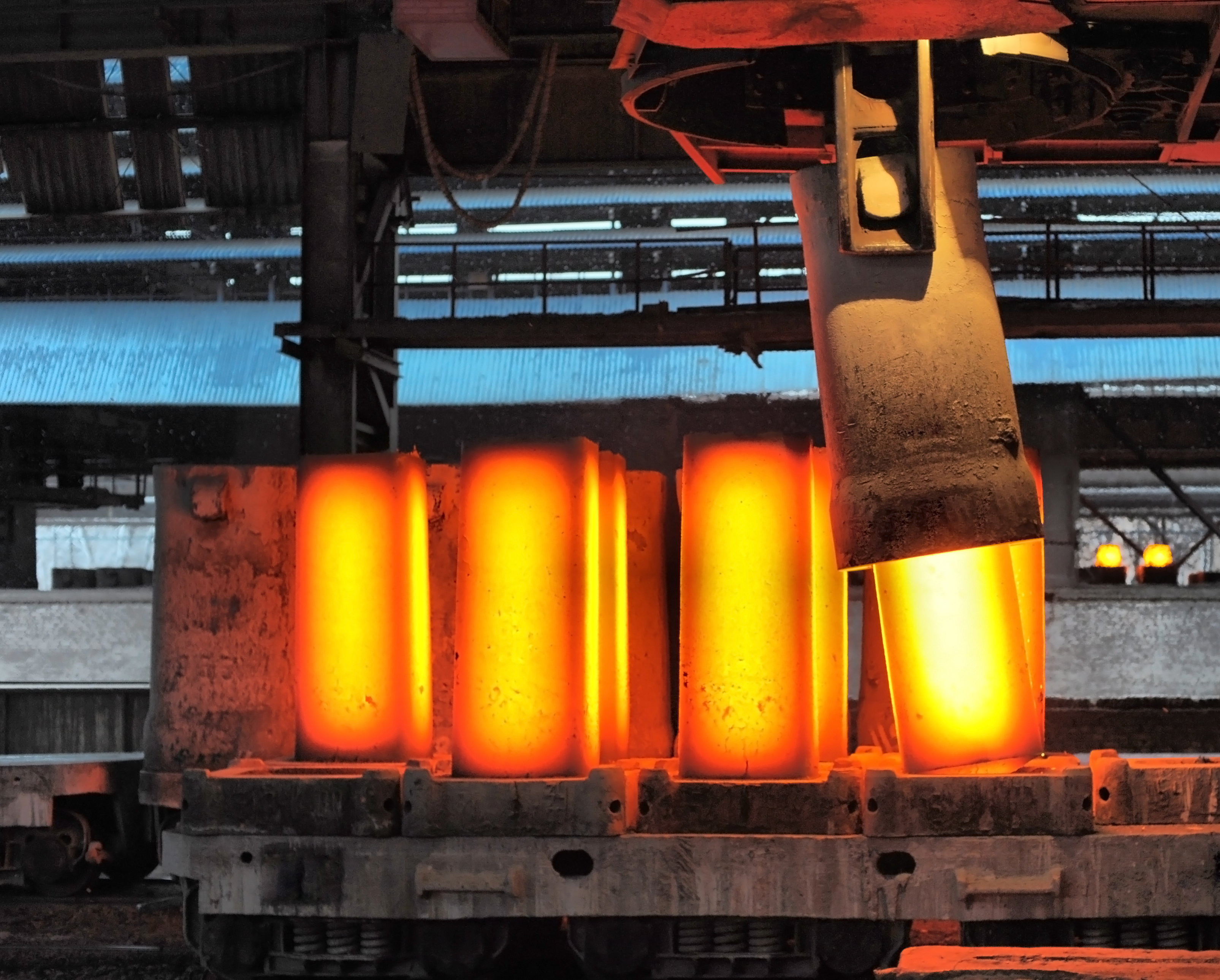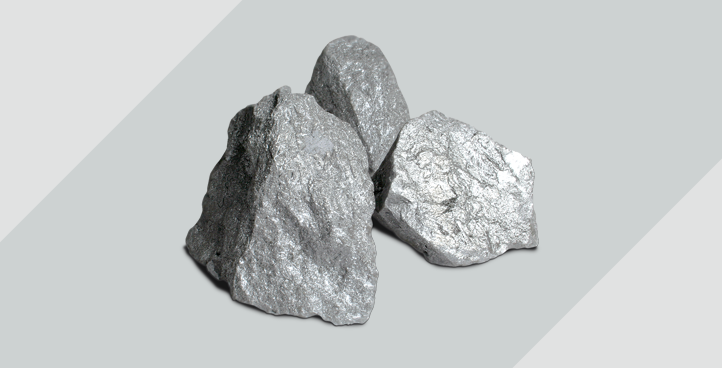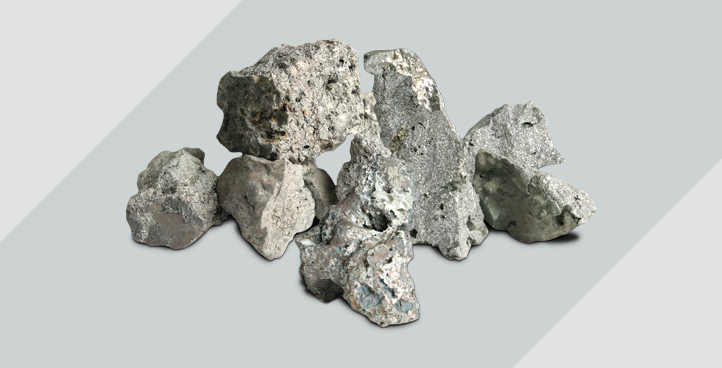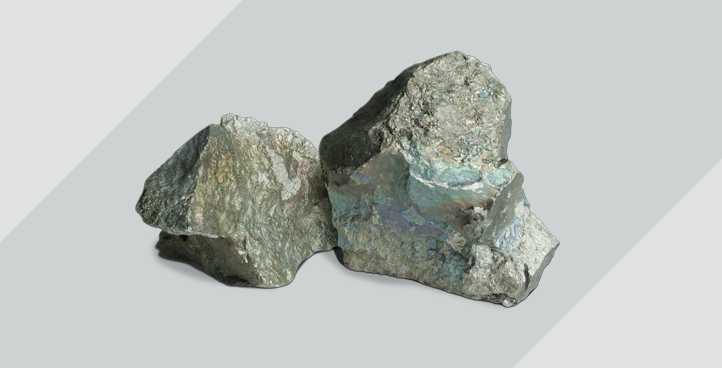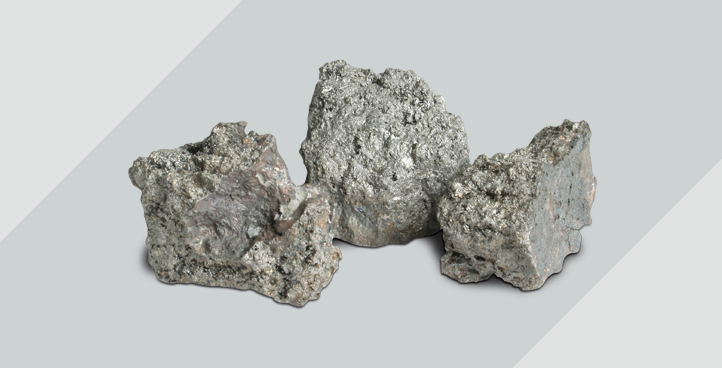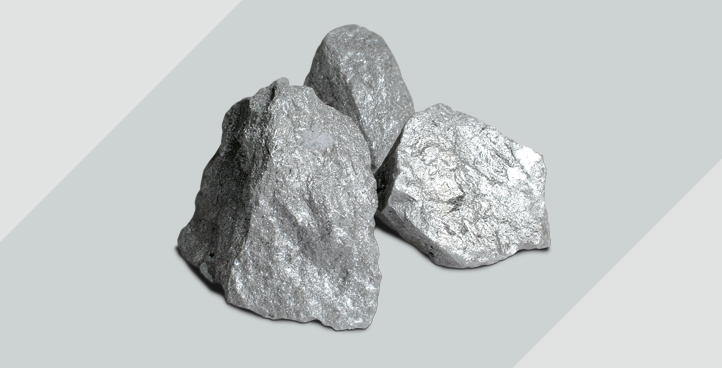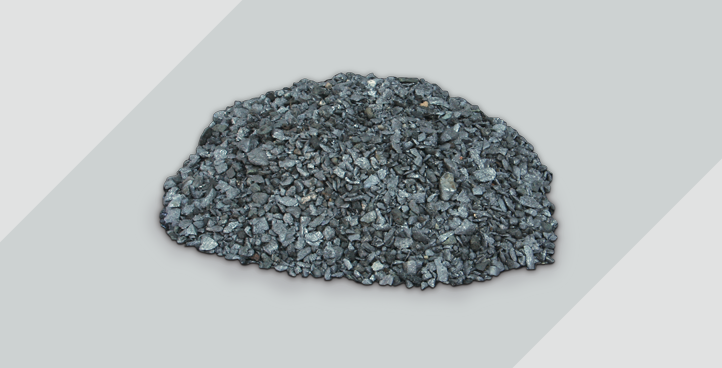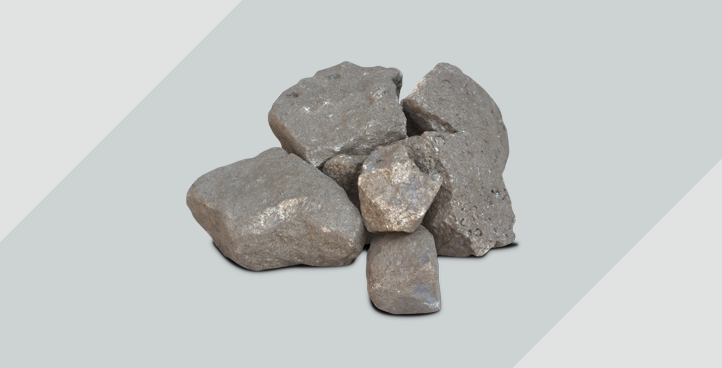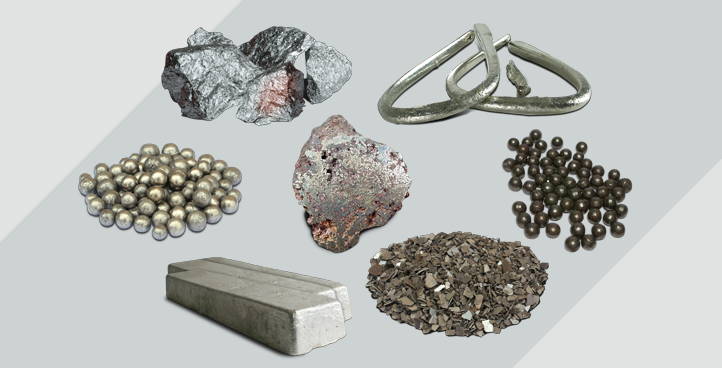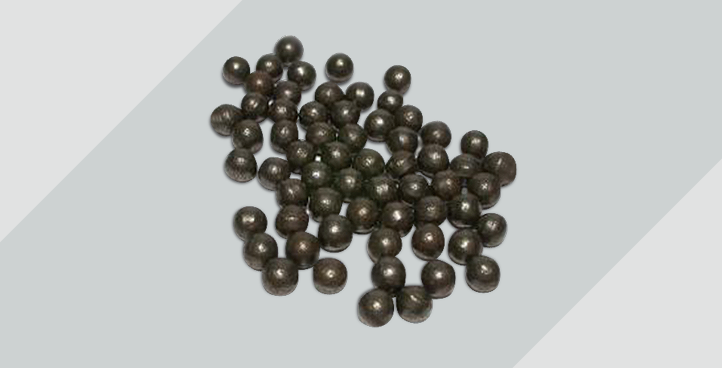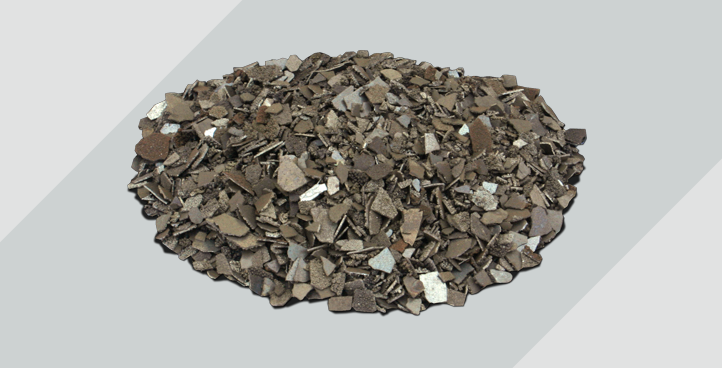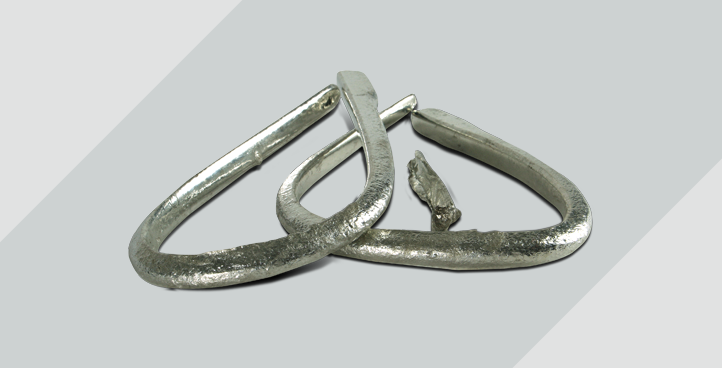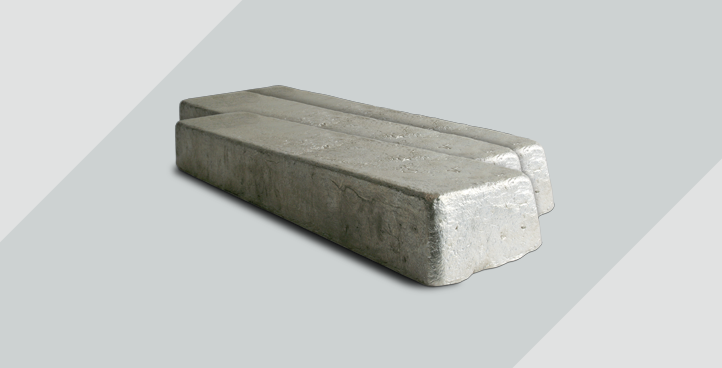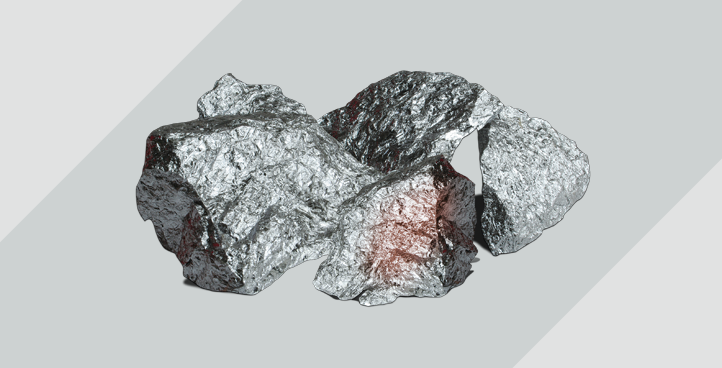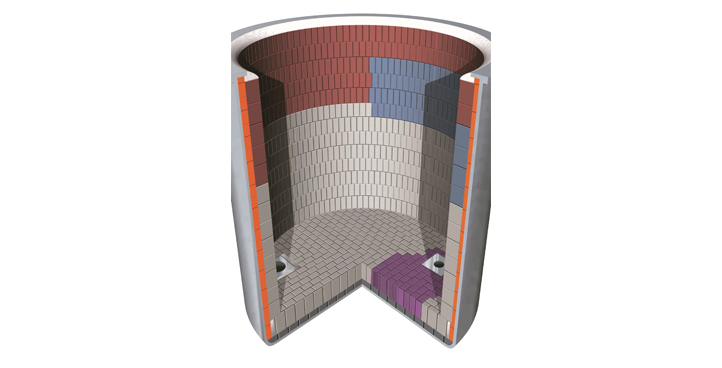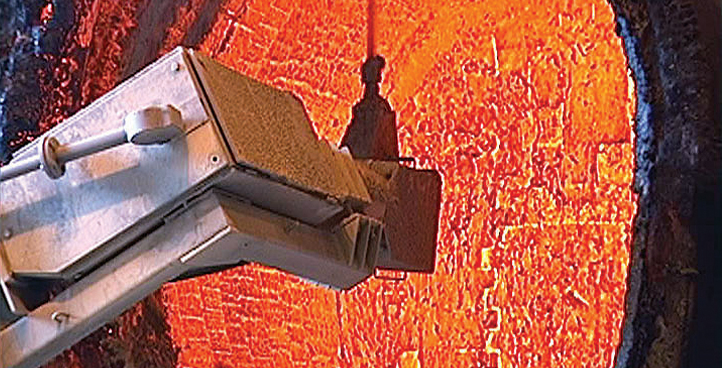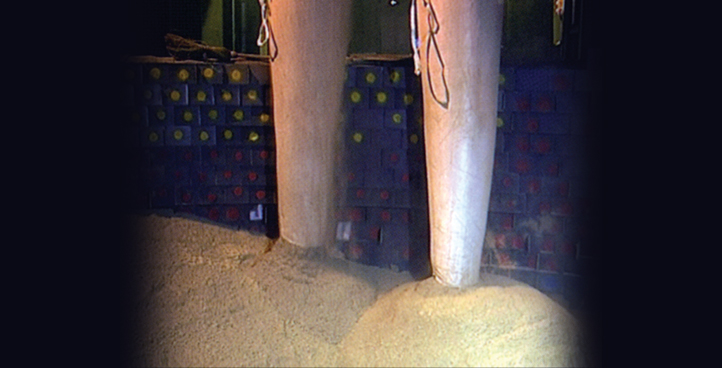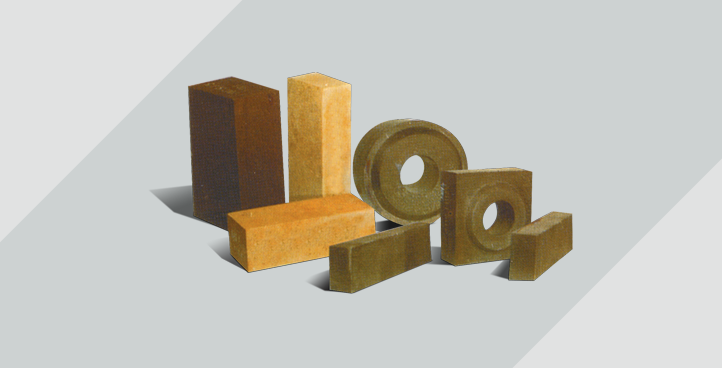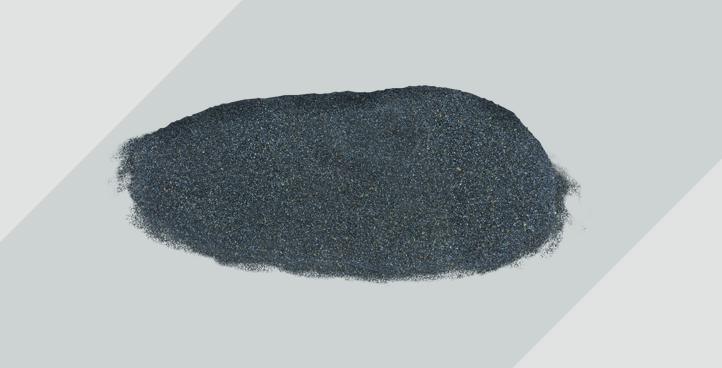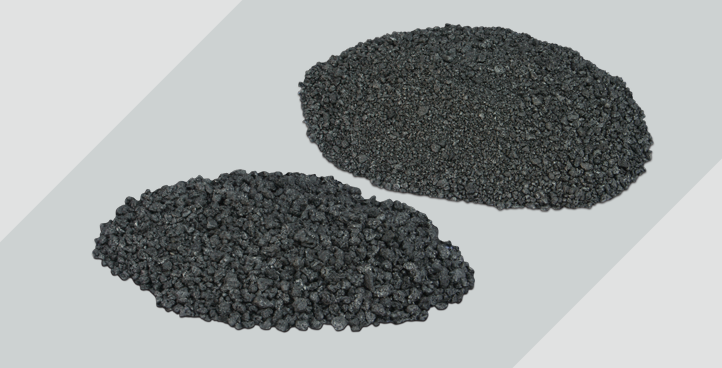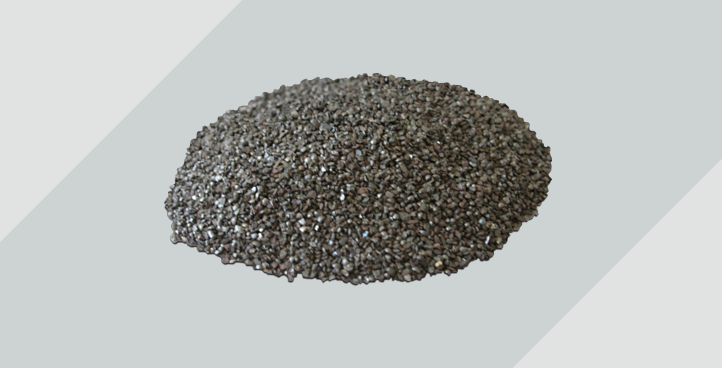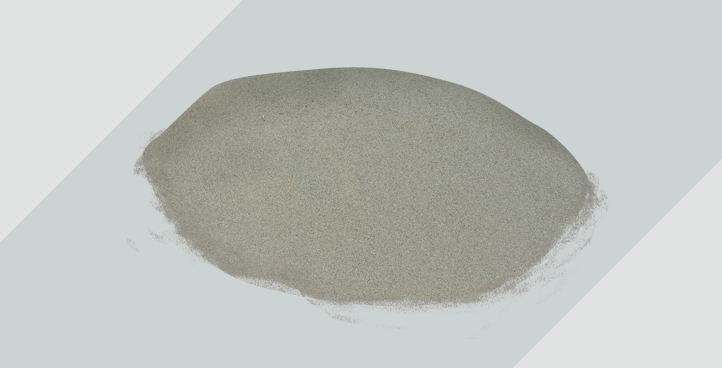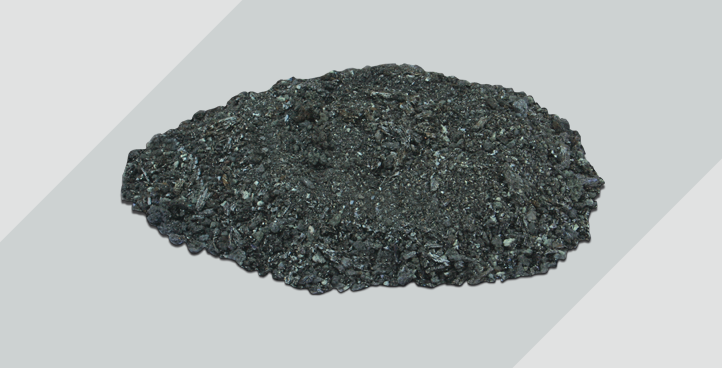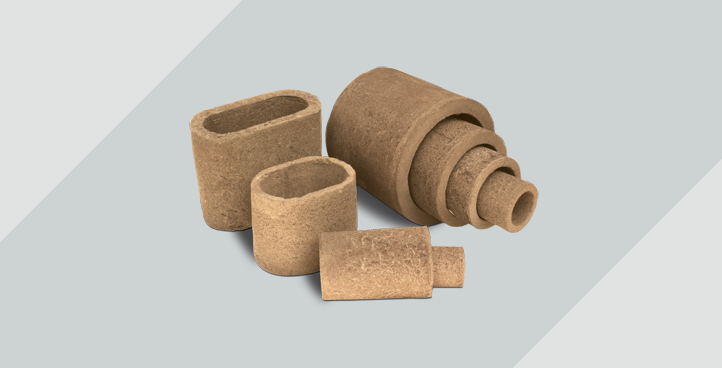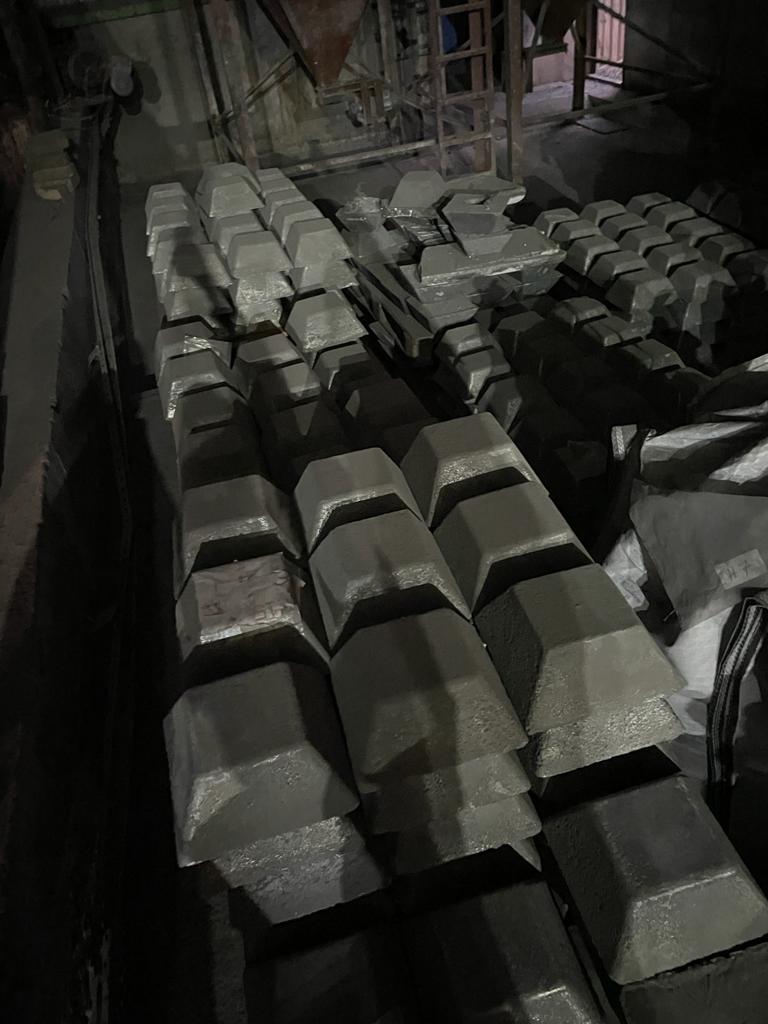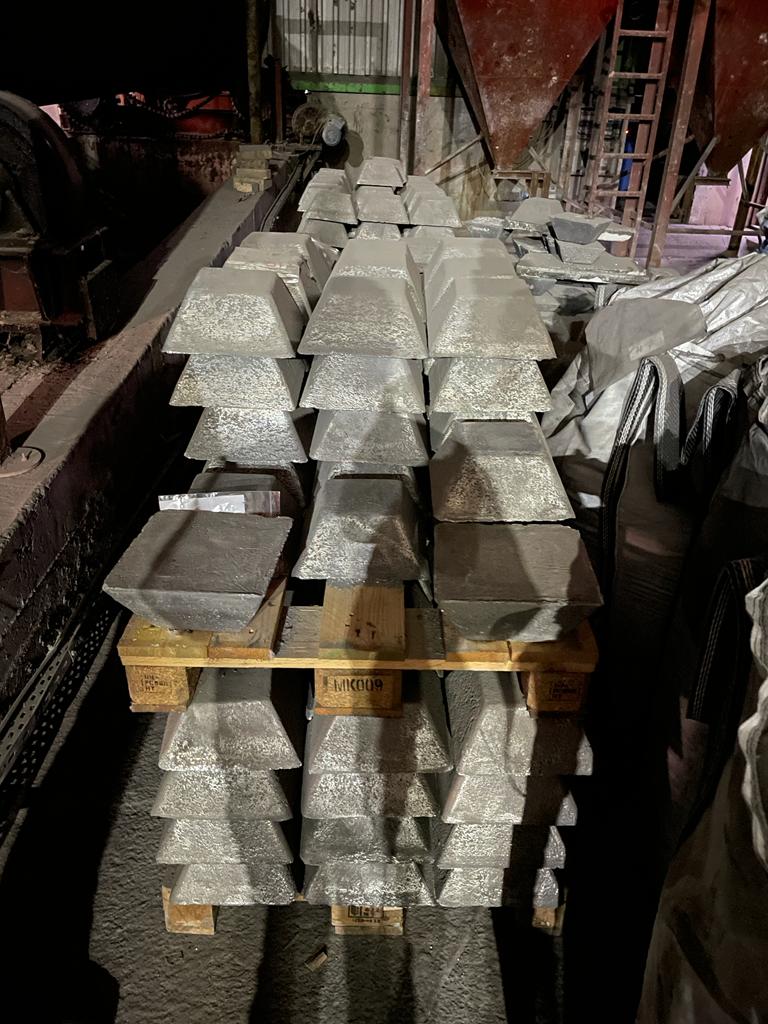Gtip Raw Materials
FOTO GALERİ
DETAYLAR
Ferro Titanium is used by stainless steel makers as a stabiliser to prevent chromium carbide forming at grain boundaries and in the production of low carbon steels for sheet production. Main applications for Ferro Titanium include: – Cleansing Agent: used for deoxidizing, desulfurization and denitrification. – Grain Refiner: improve malleability in carbon steels, thereby increasing its versatility.
| Ti | 40 / 70 | % min |
| Al | 0.5 / 4.5 | % max |
| V | 3 | % max |
| N | 0.2 / 0.5 | % max |
| S | 0.03 | % max |
| P | 0.04 | % max |
| C | 0.20 | % max |
| Mn | 1,5 | % max |
| SIZE | 10-50 mm / 10-100 mm | |
| PACKING | 1 mt big-bag / steel drums | |
Ferro Niobium has anti-corrosive properties (better than carbon steel). The adding of Ferro Niobium to an alloy can make it more weldable and much stronger. The largest practical application of Ferro Niobium is in the alloying process of HSLA steel.
| Nb | 63 / 65 | % min |
| Al | 2 / 3 | % max |
| Si | 2.5 / 3 | % max |
| C | 0.3 | % max |
| P | 0.2 | % max |
| SIZE | 5-30 mm / 10-50 mm | |
| PACKING | 1 mt big-bag / steel drums | |
Ferro Molybdenum has hardening properties that makes steel extremely strong and at the same time weldable. Additionally, the adding of Ferro Molybdenum to an alloy can increase corrosion resistance. Ferro Molybdenum is used in stainless, heat-resisting and tool steels.
| Mo | 60 / 65 | % min |
| Cu | 0.5 | % max |
| Si | 1,5 | % max |
| S | 0.1 | % max |
| Cu | 0.1 | % max |
| P | 0.05 | % max |
| SIZE | 10-50 mm / 10-100 mm | |
| PACKING | 1 mt big-bag / steel drums | |
Ferro boron is used in the production of alloy steel and foundry iron as additives, which can improve the quenching degree and mechanical properties in carbon steel and alloys structural steel, the strength of heat-resistivity in heat-resistant steel and heat-resistant alloy steel.
| B | 18 | % min |
| Si | 1.5 | % max |
| Al | 0.5 | % max |
| C | 0.5 | % max |
| P | 0.1 | % max |
| S | 0.01 | % max |
| SIZE | 10-50 mm | |
| PACKING | 1 mt big-bag | |
Ferro Tungstenh Improving the hot hardenability, abrasion resistance and impact strength of steel, used in production of high-speed tool steel, alloy tool steel, heat-resistant steel, spring steel and magnetic steel.
| W | 75 | % min |
| Si | 0.5 | % max |
| C | 0.2 | % max |
| Mn | 0.25 | % max |
| Cu | 0.15 | % max |
| S | 0.08 | % max |
| P | 0.05 | % max |
| As | 0.05 | % max |
| Sb | 0.05 | % max |
| Sn | 0.08 | % max |
| Pb | 0.05 | % max |
| Bi | 0.06 | % max |
| SIZE | 10-50 mm / 10-100 mm | |
| PACKING | 1 mt big-bag / steel drums | |
When added to crude steel, ferrovanadium creates a product that is lightweight and extremely high in tensile strength and wear resistance.The largest practical application of Ferro Vanadium is in the alloying process of any hardened steel.
| V | 78 – 82 | % |
| Al | 0.5 / 1.5 | % max |
| Si | 1.5 | % max |
| C | 0.1 / 0.25 | % max |
| S | 0.05 | % max |
| P | 0.05 | % max |
| Cu | 0.1 | % max |
| As | 0.05 | % max |
| SIZE | 5-50 mm / 10-50 mm / 10-80 mm | |
| PACKING | 1 mt big-bag / steel drums | |
The main uses for MoOx are as direct addition to steel produced in the electric arc furnace or to smelt into Ferro Moly for further addition to the steel melt.
| GRADE | Mo | Pb (%) | S (%) | P (%) | C (%) | Cu (%) |
| Max | ||||||
| YMo57 | ≥ 57.00 | 0.2 (0.05) | 0.10 | 0.05 | 0.10 | 0.50 |
| YMo55 | ≥ 55.00 | 0.2 (0.05) | 0.10 | 0.05 | 0.10 | 0.50 |
| YMo51 | ≥ 51.00 | 0.2 (0.05) | 0.10 | 0.05 | 0.10 | 0.50 |
| SIZE | 0-4 mm 90 % min | |||||
| PACKING | In 200 / 250 kgs iron drums or big-bag on pallets | |||||
Molybdenum is primarily used as an alloying agent in steel. When added to steel in concentrations between 0.25% and 8%, molybdenum forms very high strength steels. Molybdenum also improves the strength of steel at high temperatures. When alloyed with nickel, molybdenum forms heat and corrosion resistant materials used in the chemical industry.
| Mo | 99.80 | % min | Mo | 99 | % min |
| W | 0.20 | % max | SIZE | Briquette (1’X1’X3′) | |
| O2 | 0.50 | % max | PACKING | in 300 kgs boxes | |
| SIZE | Size Bar / plate | ||||
| PACKING | 1 mt bigbags / steel drums | ||||
FOTO GALERİ
DETAYLAR
- STEEL BILLET
- REBAR / DEBAR
- WIRE ROD
- HOT ROLLED COIL (HRC)
- COLD ROLLED COIL (CRC)
FOTO GALERİ
DETAYLAR
HEMATITE PIG IRON[also known as FOUNDRY PIG IRON] is used mainly in the manufacture of grey iron castings in cupola or induction furnaces
| C | Si | Mn | P | S | |
| L1 | 3.50-4.50 % | 3.20-3.60 % | 0.40-0.80 % | 0.08 % max | 0.04 % max |
| L2 | 3.50-4.50 % | 2.80-3.20 % | 0.40-0.80 % | 0.08 % max | 0.04 % max |
| L3 | 3.50-4.50 % | 2.40-2.80 % | 0.40-0.80 % | 0.08 % max | 0.04 % max |
| L4 | 3.50-4.50 % | 2.00-2.40 % | 0.40-0.80 % | 0.08 % max | 0.04 % max |
| L5 | 3.50-4.50 % | 1.60-2.00 % | 0.40-0.80 % | 0.08 % max | 0.04 % max |
| L6 | 3.50-4.50 % | 1.20-1.60 % | 0.40-0.80 % | 0.08 % max | 0.04 % max |
| L5 – L6 Low Mn | 3.50-4.50 % | 1.00-2.00 % | 0.099 % max | 0.08 % max | 0.04 % max |
| SIZE | 10-12 kg ingots without notches | ||||
| PACKING | Bulk | ||||
BASIC PIG IRON, used mainly in electric arc steelmaking
| Basic Pig Iron | C | Si | Mn | P | S |
| LowMn | 3.50-4.50 % | 1.20 % max | 0.099 % max | 0.08 % max | 0.05% max |
| PL1 / PL2 | 3.50-4.50 % | 0.6-1.20 % | 0.40-0.80 % | 0.08 % max | 0.05% max |
| SIZE | 10-18 kg ingots without notches | ||||
| PACKING | Bulk | ||||
NODULAR PIG IRON, used in the manufacture of ductile [also known as nodular or spheroidal graphite – SG] iron castings.
| Nodular Pig Iron | C | Si | Mn | P | S |
| NODULAR | 3.50-4.50 % | 1.0 % max | 0.05 % max | 0.05 % max | 0.015 % max |
| NODULAR HP | 3.50-4.50 % | 1.0 % max | 0.04 % max | 0.04 % max | 0.010 % max |
| SIZE | 10-12 kg ingots without notches | ||||
| PACKING | Bulk | ||||
NOBLE ALLOYS – FOTO GALERİ
NOBLE ALLOYS – DETAYLAR
Ferro Silicon is a universal “heat-blocker” used in the production of carbon and stainless steels. This additive is used with other ferro alloys in the deoxidising process of steel, as well as in the production of silicon itself. It is also used in the production of cast iron, as it can accelerate graphitisation. Ferro Silicon replaces the need for ferro manganese, spiegeleisen and calcium silicides in the manufacturing process.
| Si | Al | C | P | S | |
| FeSi 45 % | 45 % min | 2.00 % max | 0.20 % max | 0.03% max | 0.02 % max |
| FeSi 65 % | 65 % min | 1.50 % max | 0.15 % max | 0.03% max | 0.02 % max |
| FeSi 75 % | 75 % min | 1.50 % max | 0.15 % max | 0.03% max | 0.02 % max |
| FeSi 75 % Low Al |
75 % min | 1.00 % max | 0.05 % max | 0.03% max | 0.02 % max |
| FeSi 75 % High Purity |
75 % min | 0.10 % max | 0.03 % max | 0.03% max | 0.02 % max |
| SIZE | 1-3 mm / 3-10 mm / 10-50 mm / 10-100 mm | ||||
| PACKING | Bulk or 1 mt big-bag | ||||
Ferro-manganese is used mainly in the steel industry for hardening and desulphurisation of steel and as a deoxidizer, making the slag more fluid.
| Mn | C | Si | P | S | |
| FeMn HC | 75 % min | 6-8 % | 1.50 % max | 0.25 % max | 0.03 % max |
| FeMn HC Low P |
76/78 % min | 6-8 % | 1.50 % max | 0.10 % max | 0.03 % max |
| FeMn MC | 80 % min | 1.50 % max | 1.50 % max | 0.20 % max | 0.03 % max |
| FeMn LC | 80 % min | 0.50 % max | 0.50 % max | 0.025 % max | 0.03 % max |
| SIZE | 1-3 mm / 3-10 mm / 10-50 mm / 10-100 mm | ||||
| PACKING | Bulk or 1 mt big-bag | ||||
Ferro Silico Manganese is used as a deoxidizer and an alloying element in steel. It can be used as a substitute for Ferro Silicon and Ferro Manganese when added to make different types of steel.
| Mn | Si | C | P | S | |
| FeSiMn 6014 | 60 % min | 14 % min | 2.0 % max | 0.30 % max | 0.05 % max |
| FeSiMn 6517 | 65 % min | 17 % min | 2.0 % max | 0.30 % max | 0.03 % max |
| FeSiMn 7018 | 70 % min | 17 % min | 2.0 % max | 0.30/0.50 % max | 0.03 % max |
| SIZE | 10-50 mm / 10-80 mm | ||||
| PACKING | Bulk or 1 mt big-bag | ||||
Ferro Silicon Magnesium is one of the best nodularizers due to its low levels of magnesium oxide and high nodularization . This material is used to modify the graphite flakes in the iron making process.
| Ferro Silico Magnesium | Mg | Si | Ca | TRE | La | Al |
| FeSiMg | 5.50 – 6.50 % | 43.0 – 48.0 % | 0.80 – 1.20 % | 0.80 – 1.20 % | 0.40-0.80 % | |
| FeSiMgMCa | 5.50 – 6.50 % | 43.0 – 48.0 % | 1.80 – 2.00 % | 0.80 – 1.20 % | 0.40-0.80 % | |
| FeSiMgHMg | 8.00 – 10.00 % | 43.0 – 48.0 % | 0.80 – 1.20 % | 0.80 – 1.20 % | 0.40-0.80 % | |
| FeSiMgLa | 5.50 – 6.50 % | 43.0 – 48.0 % | 0.80 – 1.20 % | 0.35 – 0.45 % | 0.40-0.80 % | |
| SIZE | 1-10mm / 2-20 mm / 3-25 mm / 6-30 mm and as percustomersrequirements | |||||
| PACKING | appr. 1mtbig-bag | |||||
Ferro-chrome is added to steel to impart properties of hardness, strength and making it stainless. High Carbon Ferro Chrome is most commonly used in specialist applications such as engineering steels. Low-carbon Ferro-Chrome is used during steel production to correct chrome percentages. It is also a low cost alternative to metallic chrome for uses in super alloys and other special melting applications.
| Cr | C | Si | P | S | |
| FeCr HC-Charge CR | 55-60 % | 6-8 % | 3.0 % max | 0.03 % max | 0.04 % max |
| FeCr HC | 60-65 % | 6-8 % | 1.5 % max | 0.02 % max | 0.02 % max |
| FeCr MC | 60-65 % | 0.5/1.0 % max | 1.0 % max | 0.03 % max | 0.03 % max |
| FeCr LC | 65-70 % | 0.10/0.25 % max | 1.0 % max | 0.03 % max | 0.03 % max |
| FeCr LC high purity | 65-70 % | 0.03/0.06 % max | 1.0 % max | 0.03 % max | 0.03 % max |
| SIZE | 4-10 mm / 10-50 mm / 10-80 mm / 10-100 mm | ||||
| PACKING | Bulk or 1 mt big-bag | ||||
Ferro phosphorus is used mainly as the additives in the foundry industry to improve the floatability of foundry iron, thus improving the quality of the castings. Phosphorus content can increase the wearing resistance and improve the cutability in the castings. Ferro phosphorus also used as the additive in the steel production, which can improve the corrosion resistivity in certain steel products.
| P | Si | C | S | Cu | V | |
| FeP | 23-28 % | 1-2 % | 0.1 % max | 0.01 % max | 0.5 % max | 0.5 % max |
| SIZE | 10-50 mm / 10-100 mm | |||||
| PACKING | 1 mt big-bag | |||||
“By correct inoculation of cast irons the formation of chill can be prevented and gas related porosity and shrinkage to a great extent controlled and minimized.
Inoculants are specially designed FeSi based alloys to control the microstructure and mechanical properties of cast irons”
| Inoculants | Si | Ca | Al | Ba | Zr | Mn | La | Sr |
| FeSiBa | 65.0-75.0 % | 1.50-2.25 % | 0.60-1.00 % | 2.50-3.75 % | ||||
| FeSiZrMn | 60.0-65.0 % | 1.50 % max | 0.60-1.25 % | 3.00-3.50 % | 3.50-4.00 % | |||
| FeSiLa | 70.0-75.0 % | 1.50-2.00 % | 1.50-2.00 % | 1.50-2.00 % | ||||
| FeSiSr | 70.0-75.0 % | 2.00 % | 1.00 % max | 1.00-1.50 % | ||||
| SIZE | 1-3 mm | |||||||
| PACKING | 500 lb. steel drum / 2 – 3,000 lb. super sack or wooden box / Customer specific packaging where required | |||||||
- Calcium Aluminate
- Flourspar
BASE METALS – FOTO GALERİ
Cobalt has a variety of applications which include superalloys, corrosion resistant alloys, high speed tool steels, magnets, cemented carbides, pigments, rechargeable batteries and chemical catalysts.
| Co (% min) | |
| Co Ingots | 99.30 |
| Co Cathodes | 99.90 |
| Co Briquettes | 99.80 |
Tin is used as a coating on the surface of other metals to prevent corrosion and provide low toxicity. Tin is also used in many alloys, most notably tin/lead soft solders, typically containing 60% or more of tin.
| Sn | 99.968 | % min. | Cu | 0.0004 | % max. |
| Ag | 0.0001 | % max. | Fe | 0.0023 | % max. |
| Al | 0.0001 | % max. | Pb | 0.0057 | % max. |
| As | 0.0044 | % max. | Cd | 0.0001 | % max. |
| Bi | 0.0002 | % max. | Sb | 0.0057 | % max. |
| Cd | 0.0001 | % max. | Zn | 0.0002 | % max. |
| Co | 0.0002 | % max. | |||
| SIZE | ingots / bars | ||||
| PACKING | Packing on pallets | ||||
Lead is used to line tanks that store corrosive liquids and as a covering on some wires and cables to protect them from corrosion. Lead’s high density makes it useful as a shield against X-ray and gamma-ray radiation. Most of the lead is used in the production on lead-acid storage batteries.
| Pb | 99.89 | % min. | Ag | 0.0023 | % max. |
| Sb | 0.01 | % max. | Ni | 0.001 | % max. |
| Sn | 0.001 | % max. | Cd | 0.0001 | % max. |
| As | 0.065 | % max. | Zn | 0.0005 | % max. |
| Cu | 0.0018 | % max. | S | 0.0005 | % max. |
| Bi | 0.021 | % max. | Other impurities | 0.021 | % max. |
| SIZE | 0.3-10 mm | ||||
| PACKING | 1 mt big-bag | ||||
Silicon is alloyed with aluminum for use in engines as the presence of silicon improves the metal’s castability. Silicon can enhance iron’s magnetic properties. It is also an important component of steel, which it toughens.
| Si (% min) | Fe (% max) | Al (% max) | Ca (% max) | P (ppm) | |
| SiMet 1101 | 99.50 | 0.1 | 0.1 | 0.01 | 15-40 |
| SiMet 1501 | 99.20 | 0.15 | 0.15 | 0.01 | 20-40 |
| SiMet 2202 | 99.50 | 0.2 | 0.2 | 0.02 | 30-100 |
| SiMet 3303 | 99.00 | 0.3 | 0.3 | 0.03 | 40-100 |
| SiMet 3305 | 99.00 | 0.3 | 0.3 | 0.05 | 40-100 |
| SiMet 331 | 99.00 | 0.3 | 0.3 | 0.01 | 40-100 |
| SiMet 4405 | 99.00 | 0.4 | 0.4 | 0.05 | 40-100 |
| SiMet 441 | 99.00 | 0.4 | 0.4 | 0.1 | 40-100 |
| SiMet 553 | 98.50 | 0.5 | 0.5 | 0.3 | 40-100 |
| SiMet 775 | 97.00 | 0.7 | 0.7 | 0.5 | 40-100 |
| SIZE | 2-25 mm / 10-100 mm | ||||
| PACKING | 1 mt big-bag | ||||
The main applications of magnesium are, in order: component of aluminium alloys, in die-casting (alloyed with zinc), to remove sulfur in the production of iron and steel, the production of titanium in the Kroll process.
| Mg | 99.9 | % min. |
| Fe | 0.04 | % max. |
| Si | 0.02 | % max. |
| Ni | 0.002 | % max. |
| Cu | 0.01 | % max. |
| Al | 0.02 | % max. |
| Cl | 0.05 | % max. |
| Mo | 0.03 | % max. |
| Na | not stated | % max. |
| SIZE | 7.5 ± 0.5 Kgs. ingot/granules | |
| PACKING | on pallets | |
In fact, the single largest use of manganese today is in the creation or iron and steel alloys for building purposes. Manganese is essential to iron and steel production by virtue of its sulfur-fixing, deoxidizing, and alloying properties.
| Mn | 99.7 | % min |
| C | 0.04 | % max. |
| S | 0.05 | % max. |
| P | 0.005 | % max. |
| Fe+Si+Se | 0.205 | % max. |
| SIZE | Flake/lump/briqutte | |
| PACKING | in big-bags / steel drums | |
Two-thirds of all nickel produced goes into stainless steel, to promote a stable, ductile, austenitic structure as well as contribute to corrosion resistance.
| Ni | 99.970 | % min |
| Co | 0.00010 | % max |
| Co | 0.00010 | % max |
| S | 0.00070 | % max |
| Fe | 0.00600 | % max |
| Cu | 0.00020 | % max |
| Zn | 0.00005 | % max |
| Pb | 0.00002 | % max |
| SIZE | 5-13 mm granules / 4×4 cm Cut Cathodes | |
| PACKING | in 250 kg steel drums | |
FOTO GALERİ
DETAYLAR
BASIC
• Magnesia Bricks
• Magnesia Chrome Bricks
• Direct Bonded Magnesia Chrome Bricks
• Magnesia Carbon Bricks
• Basic Mortars
• Basic Ramming Masses
• Basic Gunning Masses
• Basic Spraying Masses
• Basic Fetling Masses
DOLOMITE
Dolomite Bricks
Dolomite Monolithics
FIRECLAY & HIGH ALUMINA
• Fireclay & High Alumina Bricks
• Fireclay & High Alumina Ceramic Setting Mortars
• Fireclay & High Alumina Plastic Masses
• Fireclay & High Alumina Castables
• Insulating Castables
• Low Cement High Alumina Castables
• Coke Oven Gunning Mixes
• Coke Oven Spraying Mixes
• Ultra Low Cement Castables
• Conventional Dense Castables
• Insulating Castables
SILICA
• Silica Bricks
• Silica Mortars
• Silica Ramming Masses
FLOW CONTROL
• Slide Gate Refractories
• Gus Purging Refractories
• Tundish Refractories
• Flow Control Monolithics
SPECIAL REFRACTORIES
Silicon Carbide Bricks
Zircon Bricks
INDUCTION FURNACE MAIN LININGS
Neutral Linings
Basic Linings
Silica Linings
REFRACTORY RAW MATERIALS
MAGNESITE:
Dead Burned Magnesite
Fused Magnesite
GRAPHITE:
Natural Flake Graphite
Amorphous Graphite
SPINELS:
Sintered Alumina-Magnesia Spinel
Fused Alumina- Magnesia Spinel
ALUMINA:
Rotary Kiln Bauxite
Shaft Kiln Bauxite
White Fused Alumina
Brown Fused Alumina
Sintered Mullite
ALUMINA-SILICATE:
Flint Clay
KAOLIN
SILICON CARBIDE (Refractory Grade)
EAF Casting Hole Sand
FOTO GALERİ
DETAYLAR
“The electric furnace production of cast iron often requires a recarburizing step because the process relies on inexpensive, relatively low carbon scrap as a starting material. High carbon scrap, high carbon ferroalloys or even pig iron are used as sources of carbon but when practice, specifications or economics dictate, specific recarburizers are needed.
So recarburizer can be used in the casting, which can significantly increase the amount of scrap steel and reduce the consumption of pig iron or even doesn’t use pig iron.”
| Carbon Products | Fix Carbon | Sulphur | Nitrogen | Ash | Hydrogen | Size (mm) |
| Carbon Products S | 99.85 % | 0.01 % | 0.001 % | 0.18% | 0.007% | 0.5-4 |
| Carbon Products G | 99.50 % | 0.85 % | 0.03% | 0.36% | 0.19% | 0.5-4 |
| PACKING | Big-bags / Paper Bags wrapped on Pallets | |||||
FOTO GALERİ
DETAYLAR
Steel abrasives are steel particles that are used as abrasive or peening media. They are usually available in two different shapes (shot and grit) that address different industrial applications. Steel shot refers to spherical grains made of molten steel through an atomization (“granulation”) process, available in different sizes and hardnesses.
| Product Size (mm) |
% : min & max cumulative percentages allowed on corresponding sieves | |||||||||||||||
| S780 2.0-2.8 | 0% | 85 % min |
97 % min |
|||||||||||||
| S660 1.7-2.4 | 85 % min |
97 % min |
||||||||||||||
| S550 1.4-2.0 | 0% | 85 % min |
97 % min |
|||||||||||||
| S460 1.2-1.7 | 0% | 5 % max |
85 % min |
96 % min |
||||||||||||
| S390 1.0-1.4 | 0% | 5 % max |
85 % min |
96 % min |
||||||||||||
| S330 0.85-1.2 | 0% | 5 % max |
85 % min |
96 % min |
||||||||||||
| S280 0.71-1.0 | 8 | 0% | 5 % max |
85 % min |
96 % min |
|||||||||||
| S230 0.6-0.85 | 2.36 | 0% | 10 % max |
85 % min |
97 % min |
|||||||||||
| S170 0.42-0.71 | 0% | 10 % max |
85 % min |
97 % min |
||||||||||||
| S110 0.3-0.5 | 0% | 10 % max |
80 % min |
90 % min |
||||||||||||
| S70 0.18-0.35 | 0% | 0% | 10 % max |
80 % min |
90 % min |
|||||||||||
| SAE Sieve No. | 7 | 10 | 12 | 14 | 16 | 18 | 20 | 25 | 30 | 35 | 40 | 45 | 50 | 80 | 120 | |
| Aperture | 2.80 | 2.00 | 1.70 | 1.40 | 1.18 | 1.00 | 0.85 | 0.71 | 0.60 | 0.50 | 0.425 | 0.355 | 0.30 | 0.18 | 1.125 | |
Steel grit characterizes grains with a predominantly angular shape. These grains are obtained by crushing steel shot, therefore they exhibit sharp edges and broken sections. Harder than steel shot, it is also available in different sizes and hardnesses.
| Product Size (mm) |
% : min & max cumulative percentages allowed on corresponding sieves | |||||||||||||||
| G12 1.7-2.4 | 0% | 80 % min |
90 % min |
|||||||||||||
| G14 1.4-2.0 | 0% | 80 % min |
90 % min |
|||||||||||||
| G16 1.2-1.7 | 0% | 75 % min |
85 % min |
|||||||||||||
| G18 1.0-1.4 | 0% | 75 % min |
85 % min |
|||||||||||||
| G25 0.71-1.2 | 0% | 70 % min |
80 % min |
|||||||||||||
| G40 0.42-1.0 | 0% | 70 % min |
80 % min |
|||||||||||||
| G50 0.3-0.71 | 0% | 65 % min |
75 % min |
|||||||||||||
| G80 0.18-0.42 | 0% | 65 % min |
75 % min |
|||||||||||||
| SAE Sieve No. | 7 | 8 | 10 | 12 | 14 | 16 | 18 | 20 | 25 | 30 | 35 | 40 | 45 | 50 | 80 | 120 |
| Aperture | 2.80 | 2.36 | 2.00 | 1.70 | 1.40 | 1.18 | 1.00 | 0.85 | 0.71 | 0.60 | 0.50 | 0.425 | 0.355 | 0.30 | 0.18 | 1.125 |
This abrasive is used for cleaning aluminum and other non-ferrous castings and forgings. Stainless steel shot can leave a surface free of contamination that causes rust.
| mm | EN 20 | EN 30 | EN 40 | EN 50 | EN 60 | EN 100 |
| 1.400 | 5 % max | |||||
| 1.180 | 5 % max | |||||
| 1.000 | 5 % max | |||||
| 0.850 | 5 % max | |||||
| 0.710 | 5 % max | |||||
| 0.600 | 90 % max | |||||
| 0.500 | 5 % max | |||||
| 0.425 | 90 % max | |||||
| 0.355 | ||||||
| 0.300 | 5 % max | |||||
| 0.212 | ||||||
| 0.106 | 90 % max | |||||
| 0.075 | 90 % max |
The main application of calcium carbide is when reacting with water to generate acetylene gas. Carbide is used as a desulphurising agent in the metallurgical industry to remove sulphur from the iron before it is converted in the BOF (Basic Oxygen Furnace). Carbide is also used for FeO and MnO deoxidation in the steel industry.
| SIZE | Low Size (mm) % Max. |
Over Size (mm) % Max. |
Yield (Lt/Kg) Min. |
C2Ca % Min. |
| 50 – 80 mm | 5 | 5 | 291 | 77 |
| 25 – 50 mm | 5 | 5 | 291 | 77 |
| 7 – 15 mm | 5 | 5 | 252 | 67 |
| Specifications | CaC2 : 77% min. | |||
| pH3 | 110 ppm max. (DIN 53922) | |||
| Packing | In net 55/100/120 kgs, airtight and pneumatically sealed steel drums on pallets or 100 kg steel drums on pallets. |
|||
Silicon carbide is used for the de-oxidation and re-carburation of cast iron and steel in foundries. Metallurgical grade Silicon Carbide grain is a unique material for use in the production of iron and steel. It is used in the foundry industry for electric furnace production of gray, ductile, and malleable iron. It is an excellent source of carbon and silicon, promoting nucleation and rendering the iron more responsive to inoculation, deoxidizing the iron, which enhances furnace lining life.
| SILICON CARBIDE (BRIQUETTE) | SiC | CaO | Al2O3 | C | Si from SiC | C free from SiC | |
| Extra | 70 % min | 22.5 % | 0.5 % | 1.5 % | 50% | 21% | |
| Normal | 50 % min | Fe | 13.5 % | 0.5 % | 1.5 % | 35% | 15% |
| Special | 70 % min | 0.5 % max | 13.5 % | 0.5 % | 1.5 % | 50% | 21% |
| SIZE | 10 x 10 x 11 cm or hexagonal 9 x 10 cm | ||||||
| PACKING | 1 mt big-bag | ||||||
| SILICON CARBIDE (POWDER) | SiC | Fe | Al2O3 | H2O | C |
| Extra | 88.0 – 92.0 % min | 0.5 % max | 3.0 % max | 1.0 % max | 1.5 % |
| SIZE | 1 – 10 mm | ||||
| PACKING | 1 mt big-bag | ||||
FOTO GALERİ
DETAYLAR
NO BAKE PROCESS
• Alp Haset Resins (Phenolic Ester Cured System)
• Furan and Phenolic Resins (Acid Cured System)
GAS CURED PROCESS
• Sigmacure Cold Box Resins (Amine Cured System)
• Betaset Cold Box Resins (MF Cured System)
• Alkafen Resins (CO2 Cured System)
HOT BOX RESINS
THERMOSHOCK RESINS
EXOTHERMIC MATERIALS
• Insulating Sleeves
• Exothermic Sleeves
• Highly Exothermic Sleeves
• Highly Exothermic Mini Sleeves
• Feeding Compounds
• Mouldable Exothermic Compounds
MOULD AND CORE COATINGS
ADHESIVES
COATED SANDS
INDUSTRIAL RESINS
CHROMITE SAND
CERAMIC SAND
FOTO GALERİ
DETAYLAR
Crushing the additives (deoxidant,desulfurizer,alloys) into certain granulation (in the form of powder), then,using the equipment to fill the powder into the “U” shaped sheath, which is made of high quality cold rolled steel strip, lastly, tightly closing the wire, so a multiple material(cored wire) with certain length will be obtained.Calcium Silicon (CaSi) is a potent deoxidizer and desulfurizer utilized in the production of high grade steels. Calcium Silicon is used to control the shape, size and distribution of oxide and sulfide inclusions improving fluidity, machinability, ductility, and impact properties of the final product.Calcium iron (CaFe) contributes greatly to deoxidation, desulfuration and impurity removing, it also helps increase the collecting rate of rare earth elements and other elements, enable the stability of the composition, reduce the usage amount of valuable mental elements.
| CaSi | CaFe | Al | FeB | C | S | |
| Ca | 28-32 % | 30 or 40 % | ≥ 99 % | |||
| Al | ≤ 2 % | ≤ 3 % | ||||
| P | ≤ 0.05 % | ≤ 0.03 % | ||||
| S | ≤ 0.05 % | ≤ 0.01 % | ≤ 0.5-0.9 % | ≥ 98 % | ||
| Fe | balance | balance | ≤ 0.5 % | balance | ||
| Si | 55-65 % | ≤ 0.45 % | ≤ 4 % | |||
| C | ≤ 1 % | ≤ 0.5 % | ≥ 98 % | |||
| Cu | ≤ 0.02 % | |||||
| B | 18-20 % | |||||
| Ash | ≤ 1.8 % | ≤ 1.8 % | ||||
| Humidity | ≤ 0.1 % | ≤ 0.1 % | ||||
| Cored wire diameter | Ø 9-13-16 mm | |||||
| Coil thickness | 0.4+0.03 mm | |||||
| Powder density | 230±10 g/m | 240±10 g/m | 300±10 g/m | 540±10 g/m | 150±10 g/m | 180±10 g/m |
| Powder weight per coil | 0.5-1.2 mt | |||||
| Coil pay-off direction | Horizontal / Vertical | |||||

